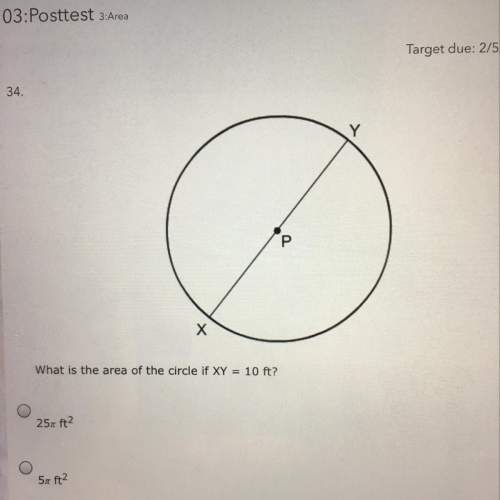Given: g ∥ h and ∠2 ≅ ∠3
Prove: e ∥ f
Horizontal and parallel lines e and f are in...

Mathematics, 19.03.2020 10:33 SESDMANS9698
Given: g ∥ h and ∠2 ≅ ∠3
Prove: e ∥ f
Horizontal and parallel lines e and f are intersected by diagonal and parallel lines g and h. At the intersection of lines g and e, the bottom right angle is angle 2. At the intersection of lines h and e, the bottom right angle is angle 1. At the intersection of lines f and h, the top left angle is angle 3.
Statements Reasons
1. g || h 1. given
2. ∠1 ≅ ∠2 2. corresponding angles theorm
3. ∠2 ≅ ∠3 3. given
4. ∠1 ≅ ∠3 4. transitive property
5. e || f 5. ?
What is the missing reason in the proof?
vertical angles theorem
alternate exterior angles theorem
converse corresponding angles theorem
converse alternate interior angles theorem

Answers: 3
Another question on Mathematics

Mathematics, 21.06.2019 15:00
Answer this question only if you know the answer! 30 points and
Answers: 1

Mathematics, 21.06.2019 19:30
Solve the following simultaneous equation by using an algebraic method (either substitution or elimination) 2x + 3y=-4 4x-y=11
Answers: 1

Mathematics, 21.06.2019 20:00
Elizabeth is using a sample to study american alligators. she plots the lengths of their tails against their total lengths to find the relationship between the two attributes. which point is an outlier in this data set?
Answers: 1

Mathematics, 21.06.2019 23:30
Find each value of the five-number summary for this set of data. [note: type your answers as numbers. do not round.] 46, 19, 38, 27, 12, 38, 51 minimum maximum median upper quartile lower quartile
Answers: 1
You know the right answer?
Questions


Mathematics, 03.02.2020 03:53

Mathematics, 03.02.2020 03:53

English, 03.02.2020 03:53

History, 03.02.2020 03:53

Mathematics, 03.02.2020 03:53

Biology, 03.02.2020 03:53

Mathematics, 03.02.2020 03:53

Mathematics, 03.02.2020 03:53


History, 03.02.2020 03:53

Mathematics, 03.02.2020 03:53

Mathematics, 03.02.2020 03:53

Computers and Technology, 03.02.2020 03:53


Health, 03.02.2020 03:53








